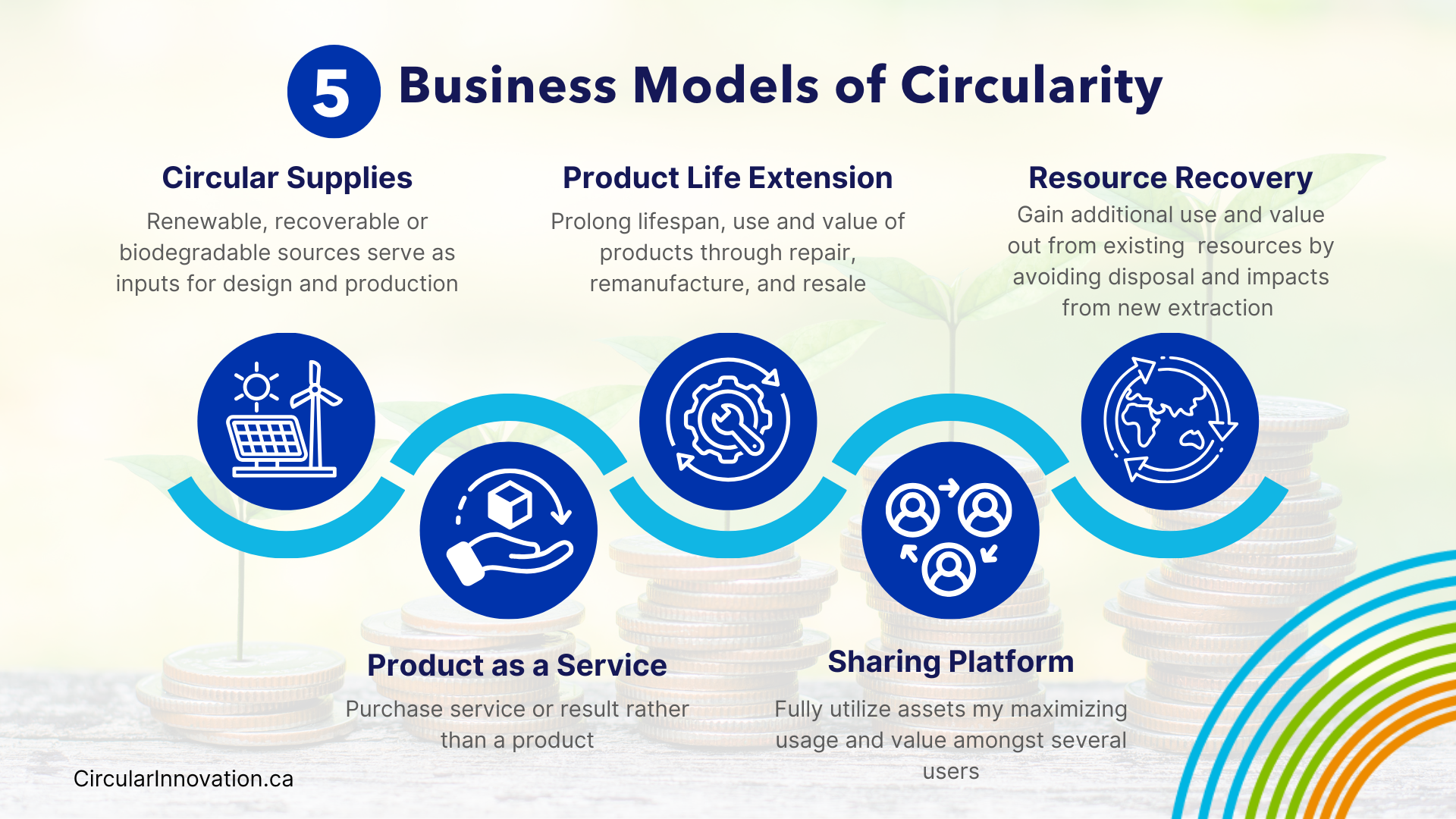When most people hear circular economy, they think about recycling and reducing their waste – but it’s so much more than that. This year’s Circular Economy Month campaign highlights its role in building economic resilience.
Canadians don’t need to be told the world feels more precarious than ever. Inflation is squeezing household budgets, climate disasters are leaving communities with mounting repair bills, and global tensions are disrupting trade. Against this backdrop, a looming economic recession has become a pressing national concern.
Each October, the Circular Innovation Council (CIC)—a national nonprofit devoted to building a more sustainable, circular economy—asks Canadians to think differently about consumption and waste. Its annual Circular Economy Month campaign, which began as Waste Reduction Week in 2001, has grown into a month-long call to rethink how we design, make, consume, and manage products. This year, the focus is squarely on the circular economy as a solution to economic resilience, affordability, and building a stronger, more sustainable community for all.
A circular economy is a systems-level shift: designing durable products for reuse and repair, keeping the earth’s resources in circulation longer, and shortening supply chains. The environmental logic is clear—less waste in landfills, lower emissions from extraction and transportation—but the economic benefits are just as promising.
“Circular economy isn’t just about reducing our environmental harm, it’s also about boosting our economy and creating social impact – all at the same time.” says Caitlin Perry, Program Manager at the CIC. “Actions like reusing and repairing products keep money in people’s pockets, and shorter supply chains cut costs and help keep jobs and skills rooted in local communities.”
Beyond Individual Action
For decades, Canadians were told that small consumer choices—bringing a reusable bag, rinsing a jar and placing it in their recycling bin—were the heart of sustainability. These actions still matter, but the transition to a circular economy requires engagement at all levels. “Individuals can only do so much without leadership and innovation from organizations and governments.” Perry says.
That can mean designing products to be repaired rather than replaced, embracing reusable packaging, and incorporating recycled content in products/packaging, among other things. Local governments specifically, are presented with a huge opportunity to champion local impact through community-based programming, policies, and pilot projects.
Designing for Efficiency, Competing on Trust
For businesses, embracing a circular economy goes well beyond doing the right thing—it’s about protecting the bottom line. Reused office furniture or remanufactured equipment comes at a fraction of the cost of new purchases. Reusable packaging reduces ongoing material expenses and shields companies from volatile commodity prices. Shorter, more localized supply chains cut transportation costs and lower exposure to geopolitical risks like tariffs.
And in a market where consumers are scrutinizing corporate sustainability efforts, circular business models enhance brand credibility. Canadians are attuned to climate change and cost-of-living pressures, and they’re choosing companies that respond to both. “Innovation and transparency really matters,” Perry says. “Consumers are keen to support companies that are making more sustainable choices and incorporate circular business models.”

Collaboration is Key
No single company or government can make the shift alone. The move from linear to circular requires collaboration at every level: innovation in businesses, community engagement, effective policy, and participation from citizens.
Repair cafés and skill-building workshops in communities, for instance, are built through partnerships among local governments, nonprofits, and volunteers. However, to successfully repair products, manufacturers must design with repair in mind. Other circular models – like reuse systems that reduce single-use plastics involve cooperation from many stakeholders in the community such as local food service businesses, logistics partners, and participating individuals.
The Circular Opportunity
On a global scale, the circular economy could unlock $4.5 trillion of economic growth and create six million new jobs.
Canada’s shift toward a circular economy is already delivering measurable results. A 2019 analysis found that, across six key circular sectors, the country supported between 371,000 and 379,000 jobs while preventing 1.6 million tonnes of CO₂ emissions each year. Activities such as reuse, repair, and refurbishment alone accounted for roughly $56 billion in economic value that year.
Join the movement: Circular Economy Month mobilizes businesses, governments, individuals and communities to celebrate environmental successes, showcase innovations, announce commitments, and educate stakeholders on the value of circularity and how to take action—all October long. Circular Economy Month is made possible with the support of sponsors including the Canadian Standards Association, Alberta Beverage Container Recycling Corporation, Circular Materials, and other supporters.
Join the movement — all October long, click the button to learn more.



